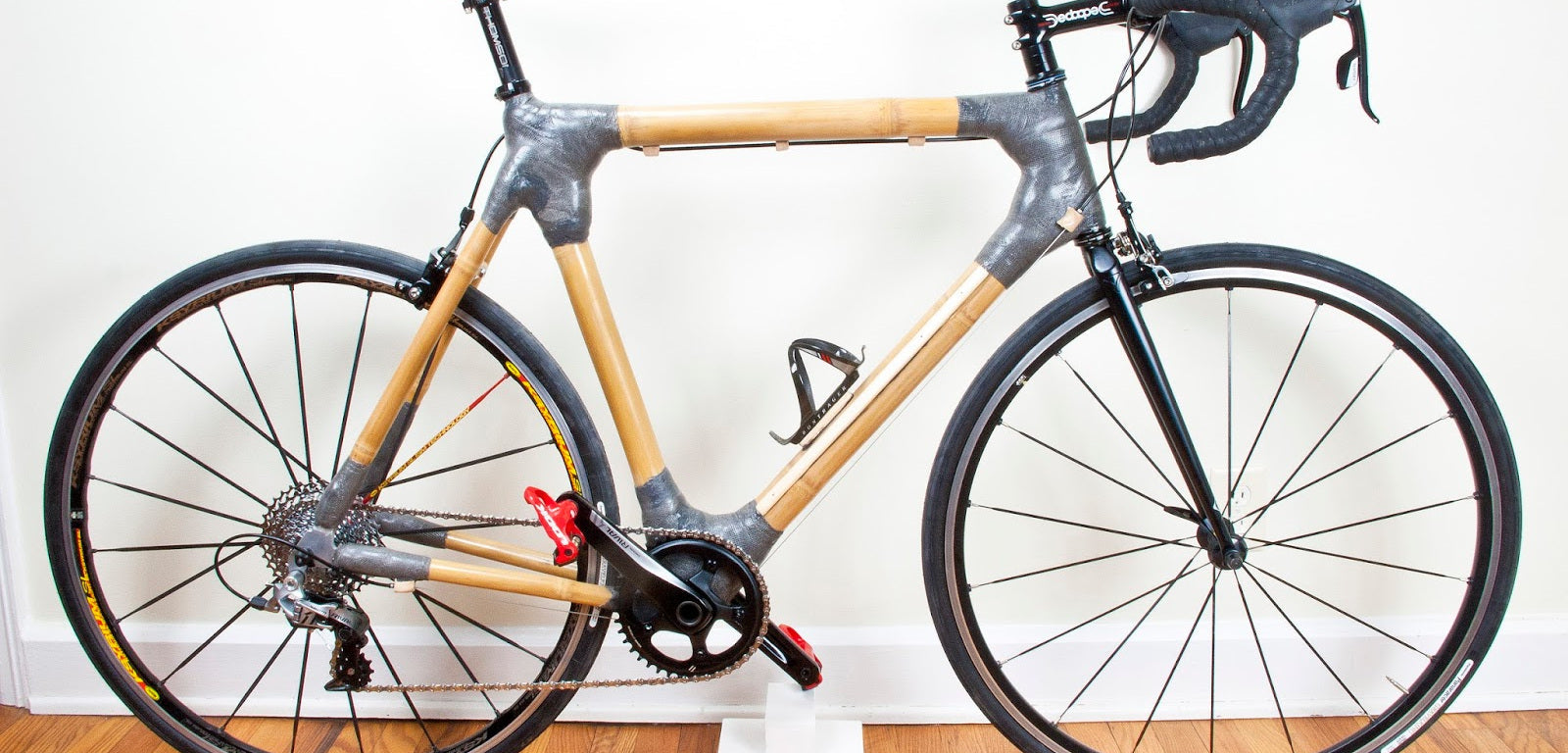Bamboo Bike made from Fiberglass Casting tape
When you've got a background in fine art, woodworking, and furniture design on top of experience teaching studio art at a collegiate level, youÆd expect to see something pretty neat. Well, you wonÆt be disappointed. Mason Cooley is a man on a mission by trying to encourage the growth of young minds, and to do so he has started a workshop for these adolescent learners. The idea for this interactive workshop came to him in a couple of ways; one being that he has always wanted to do ôproject-based learningö for youngsters and at-risk youth. His inspiration for this came from Pam Dorr at HERObike, a ôcatalyst for community developmentö in Alabama, started by locals who wanted to build a strong community focused on families. His other source for inspiration came from Craig Calfee, someone who has been building bamboo bikes for more than a decade. Craig was the one who introduced Mason to the idea of using OrthoTapeÆs fiberglass tape for his project (go Craig!!). Considering OrthoTape is easy to use and essentially harmless (when used properly, of course), Mason surmised that it would be an ideal product to use when working with children. And so the project beganàThe process starts with a good jig system that can reliably hold all the bamboo tubes in the correct positions. He angles are critical but so is the plane on which the tubes are resting, meaning, you want a flat horizontal plane so the tubes are in line with one another. The other critical point is to make sure the left and ride sides of the frame are identically spaced. A simple handmade frame alignment tool can help check to make sure this is happening. But a good jig will do this for you so long as you stay as close to ôcenterö as possible.
Mason went on to explain that once the bamboo poles or tubes are cut, mitered, and sanded then they get epoxied or tacked into place. This allows you to remove the frame from the jig for wrapping the lugged areas. ôWith the frame I built I went ahead and added basswood gussets to the inner triangle section. This helps add strength and stiffness.ö Mason continues, saying this step is not necessary but he wanted to make this first frame more robust. He then used a slow-cure epoxy which is also not necessary, saying the 5 min epoxy work as well. Again, this first frame was meant to be a test in just how rigid and strong he could make it before the final wrapping of the lug areas etc. In all, the bamboo tubes are mitered to metal tubes which hold the front fork steered tube, cranks and seat tube, including, the metal drop outs in the back for attaching the rear wheel.
Next, he began work on wrapping the bamboo tubes together. These are called lugs, which is where the strength and resilience of the frame comes from. Traditionally hemp fiber or carbon tow is used with some kind of epoxy resin to create a strong immovable bond between the points of intersecting bamboo tubes. This process can be very messy and somewhat perilous due to the resin being used. Luckily, OrthoTapeÆs Fiberglass tape came to the rescue, as it takes place of this entire process through one quick method, since, the fiberglass is already impregnated with the resin. Mason stated that ôThe only tricky part is how fast the material sets. Practice sessions of getting the ômatrixö or the crossing and overlapping of the material at different angles was necessaryö. However once he figured out through trial and error how much pressure to apply the wrapping was not very challenging. ôI would normally use the wrap straight out of the package first and begin my first several layers without any water addedö. This in turn extended the set time by about 5 min. He then pulled and laid those layers down making them tight, and then began adding water with his glove. Doing this will activate what is already there and allows one to press into, creating an even more thorough bond between the old and new layers. He would then continue wrapping with the water, but keep in mind it doesnÆt take much moisture so the amount is very small.
Lastly, he would begin sanding and applying a water based polyurethane to both the wrap and the bamboo tubes, concluding that about 8-10 coats leaves an exceptional protective and UV resistant finish.And the outcome? A bike frame thatÆs all that and a bag of chips, if ya know what I mean. Since starting the project in 2015, Mason has been in contact with several local schools about incorporating his program. As a way of getting people to see his creation, Mason also plans on attending the Makers Faire, held in North Carolina, this spring.
If you are interested in learning more about building your own bamboo bike, we have listed Mason Cooley's blog site below.

